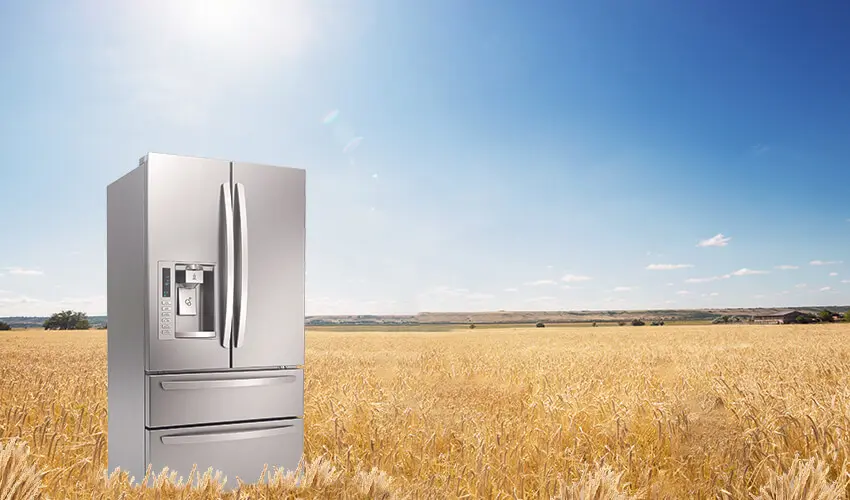When it comes to optimizing your home and outdoor space, the question of whether a refrigerator can be placed outside often comes up. At TheKitchenApplianceDad.com, we understand that outdoor gatherings, backyard barbecues, and pool parties might make you consider the convenience of having a refrigerator outdoors. Here, we delve into the feasibility, benefits, and considerations of placing a refrigerator outside.
Before placing a refrigerator outside, it’s vital to understand how the external environment affects its operation. Refrigerators are designed to operate within certain ambient temperature ranges. The typical indoor temperature range that most household refrigerators are designed for is between 60°F and 90°F (15°C to 32°C).
Outdoor temperatures: When temperatures in the environment fall below or rise above this range, the refrigerator has to work harder to maintain its internal temperature. This can lead to increased energy consumption and reduced efficiency.
Weather conditions: Exposure to elements like rain, snow, and direct sunlight can not only physically damage the refrigerator but can also impact its functionality.

If you are considering placing a refrigerator outside, it’s crucial to choose the right type. Not all refrigerators are suitable for outdoor use.
Outdoor Refrigerators: These are specifically designed to withstand external weather conditions and fluctuating temperatures. They come with more robust insulation and components that are weather-resistant.
Compact and Beverage Refrigerators: Often smaller in size, these units are sometimes used outdoors but are less equipped to handle extreme temperatures or direct exposure to elements. They’re best placed in covered areas.
Location: Select a shaded area to minimize direct exposure to sunlight. This can help in maintaining the efficiency of the unit.
Protection: Consider the use of a weatherproof cover or a built-in enclosure to protect the refrigerator from rain and snow. This can help extend its lifespan.
Power Supply: Ensure that there is a proper electrical outlet available. It’s crucial to have a GFCI (Ground Fault Circuit Interrupter) outlet to prevent electrical shocks, particularly in outdoor settings.
Ventilation: Adequate ventilation is essential for the refrigerator to operate efficiently. Make sure that the refrigerator has enough space around it, especially if it’s placed in an enclosure.
Convenience: Having easy access to food and drinks while outside can be incredibly convenient, especially if you entertain outdoors frequently.
Space Efficiency: It helps in reducing traffic in and out of the house, especially during parties or gatherings, keeping your indoor space cooler and less cluttered.
Entertainment: An outdoor refrigerator can be a great addition to your outdoor entertainment area, enhancing the overall experience for your guests.
Energy Efficiency: Outdoor refrigerators face more extreme conditions which can lead to higher energy use. It’s important to look for energy-efficient models.
Maintenance: Outdoor refrigerators require more frequent maintenance. Regular cleaning and checks are necessary to ensure they remain functional despite exposure to dirt, dust, and outdoor debris.
Cost: Outdoor-rated refrigerators can be more expensive than their indoor counterparts due to the specialized technology and materials required to withstand outdoor conditions.
There are several high-quality outdoor refrigerators on the market. Brands like Bull Outdoor Products, Blaze, and Danby offer models that are specifically designed for outdoor use. These products typically feature:
For more detailed reviews and specific model recommendations, you can check out expert reviews on sites like Consumer Reports or The Spruce.
In conclusion, placing a refrigerator outside is feasible, but it requires careful consideration of the type of refrigerator, installation environment, and ongoing maintenance. By choosing the right product and ensuring proper setup, you can enjoy the convenience and benefits of an outdoor refrigerator for many years to come. Whether it’s for storing drinks for a summer barbeque or extra space for holiday foods, an outdoor refrigerator can be a great addition to your outdoor living space.

